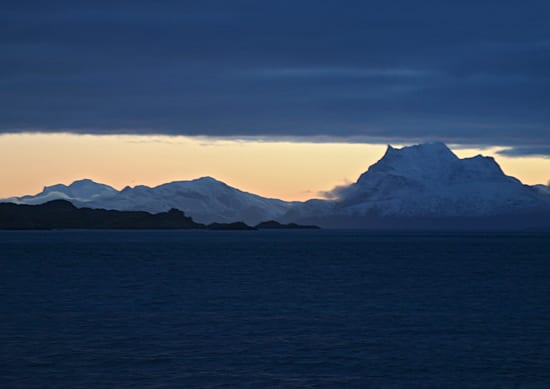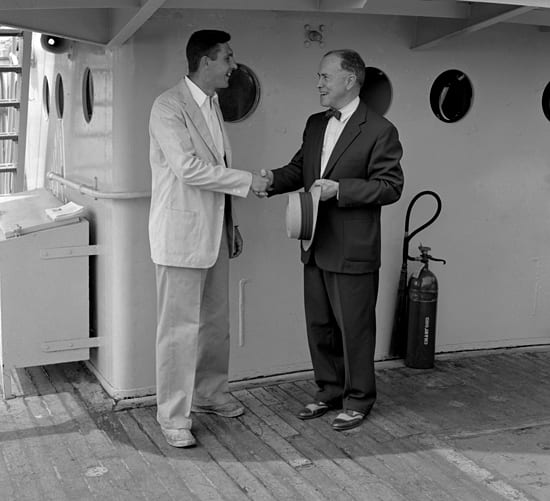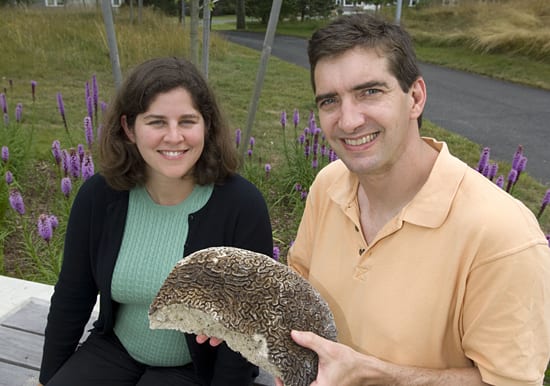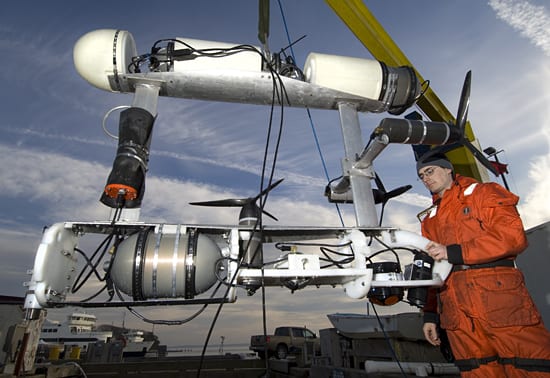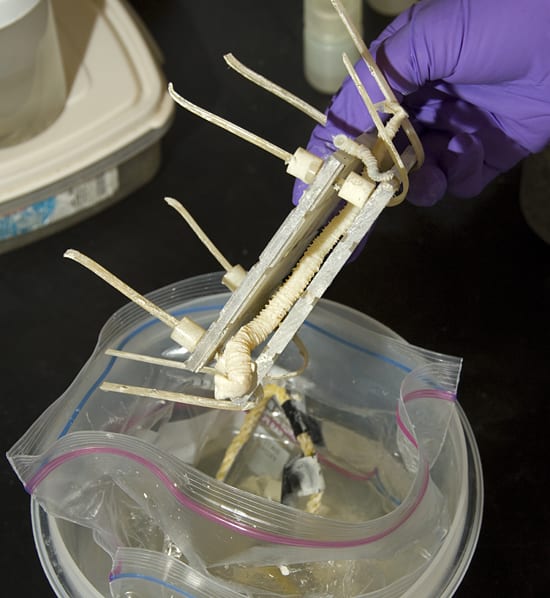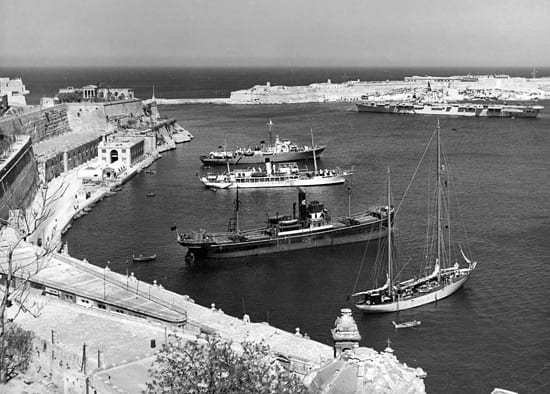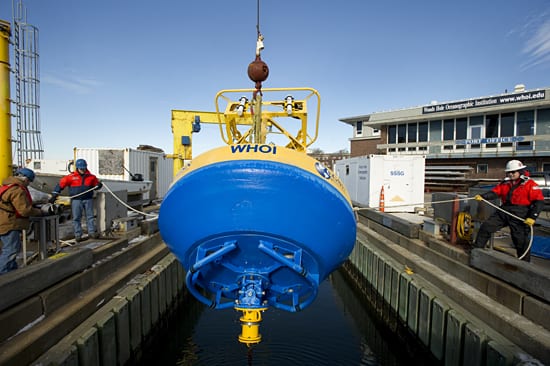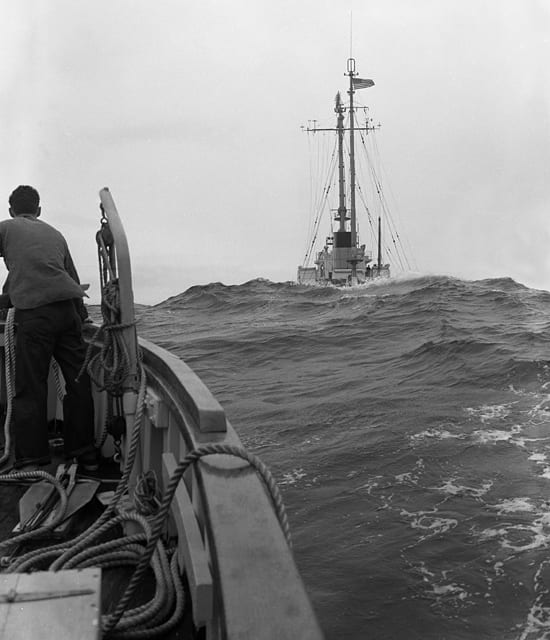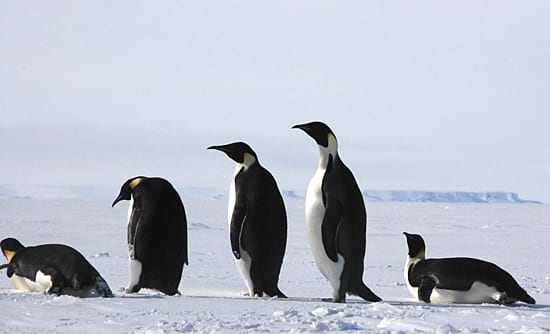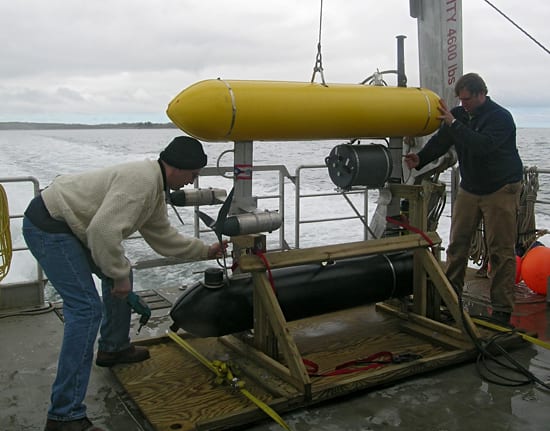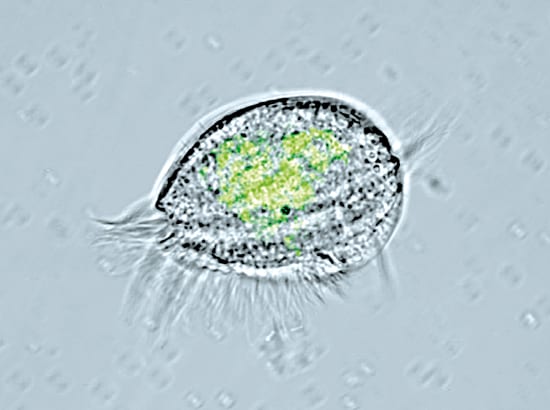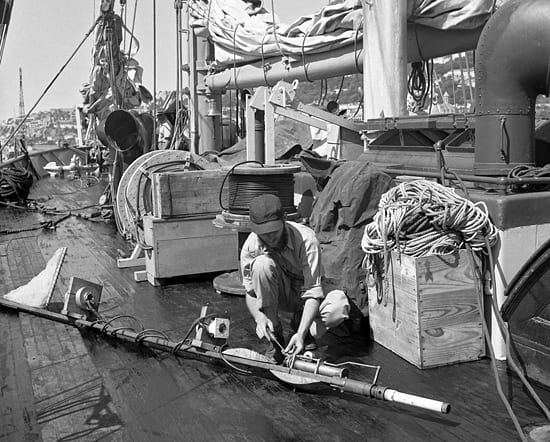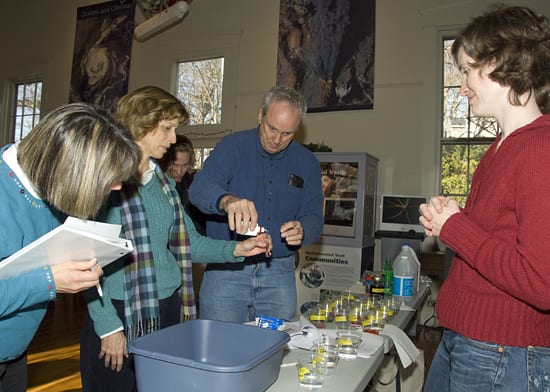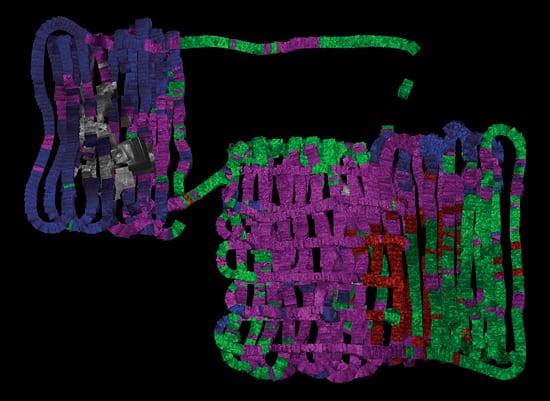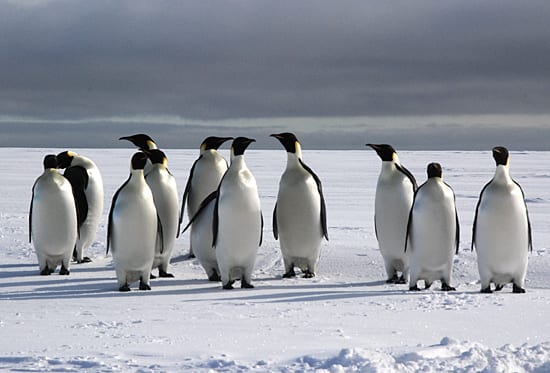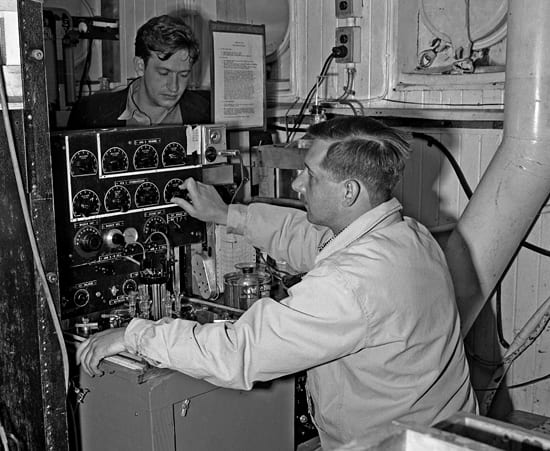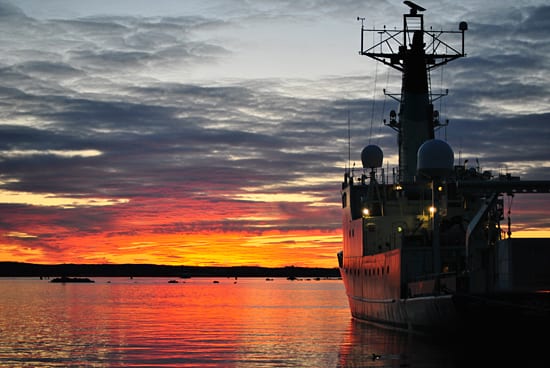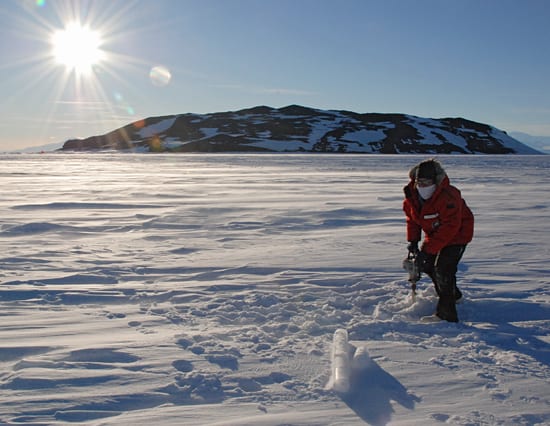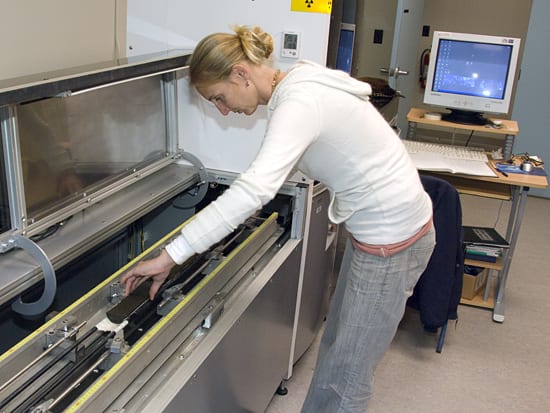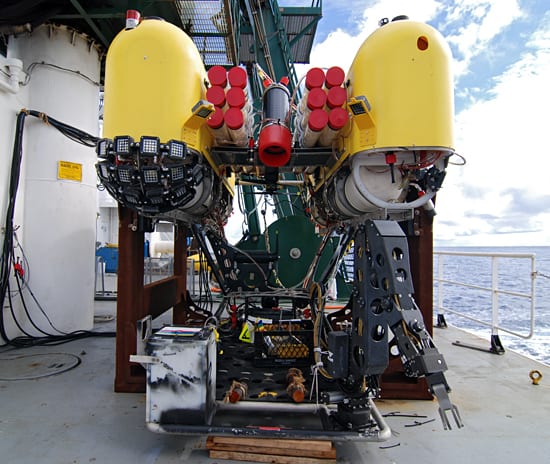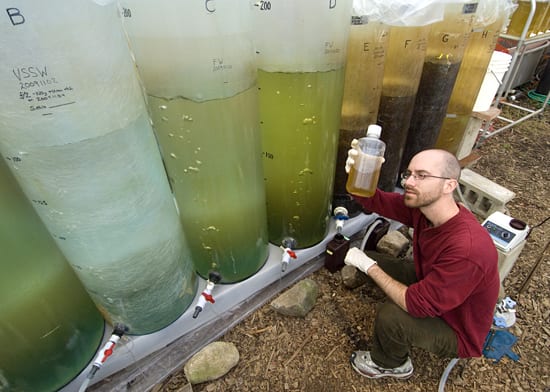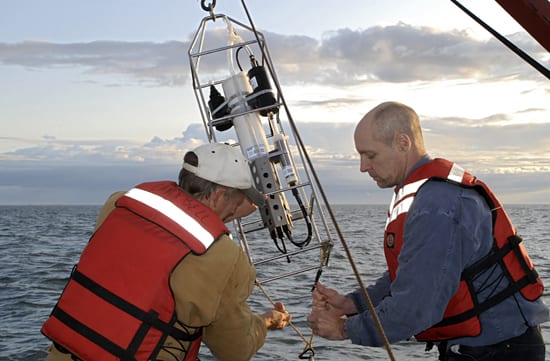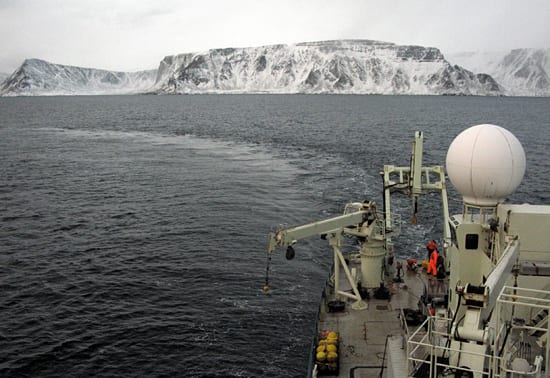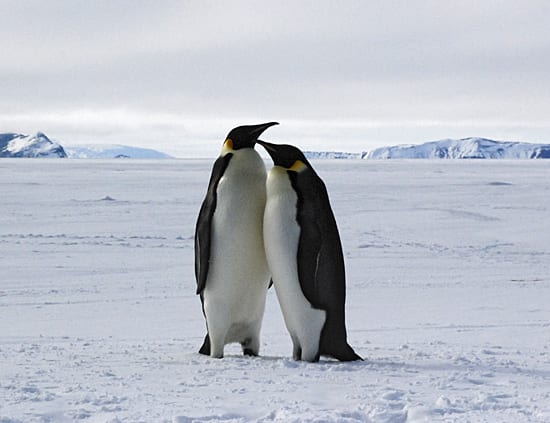Multimedia Items
Tracking warm eddies in a cold sea
Water in the ocean is always on the move, with big currents flowing like rivers in different directions and at different layers in the sea. These ocean currents help carry…
Read MoreA new addition
Edward H. Smith (right) WHOI director from 1950 to 1956, greets Crawford master David Casiles upon the ship’s arrival in Woods Hole in 1956. Smith spent 40 years in the…
Read MoreCoral climate clues
Former MIT/WHOI Joint Program student Nathalie Goodkin and Scott Doney of the Marine Chemistry and Geochemistry department pose with a piece of Bermuda brain coral. Corals accrete seasonal and annual…
Read MoreFlying high
WHOI/MIT Joint Program student Chris Murphy tests a newly-built SeaBED autonomous underwater vehicle (AUV) at the WHOI dock in 2009. The AUV, shown here without its outer “skin,” was developed in…
Read MorePacific plates
Stacked plastic plates, called “sandwiches” (left), used as artificial substrates for larvae of vent animals. As part of the research project LADDER (Larval Dispersal on the Deep East Pacific Rise),…
Read MoreCharting the Aegean
Valletta, Malta, was among the ports Atlantis (right) visited during “the Med cruise,” a six-month, 1948 cruise to the Mediterranean Sea. The cruise was funded by the Hydrographic Office and…
Read MoreIt’s a buoy for OOI
The first buoy designed for the Ocean Observatory Initiative (OOI) undergoes testing at the dock. Holding the lines to steady the suspended buoy are senior engineer Tim Scholz, left, and…
Read MoreFree-living barnacle?
The USCG Campbell towing Balanus Circa 1948. Balanus was part of the WHOI fleet from 1946 to 1950. It was a rather uncomfortable craft that biologist Gordon Riley said was…
Read MoreSingle file line
For all its ice, cold, and six months of darkness, the oceans around Antarctica are teeming with life. Penguins, whales, and seals inhabit the area where sea ice meets open…
Read MorePiecing together the past
Deep-sea archaeologist Brendan Foley and Matt Grund, of the Applied Ocean Physics & Engineering department, ready a SeaBED Autonomous Underwater Vehicle (AUV) for testing off the R/V Tioga in 2005.…
Read MoreTrojan horses
A single-celled organism has eaten bacteria, which are easily visible because they were treated with green dye. Some bacteria can live within organisms, waiting to be released back into the…
Read MoreRigging up
Photographer Dave Owen rigging up his camera system on deck of Atlantis. Owen conducted extensive deep-sea camera operations on many expeditions, including three cruises between 1972 and 1974 near the…
Read MoreExploring ocean acidification
Postdoctoral Investigator Sarah Cooley (right), of the Marine Chemistry & Geochemistry department, leads a group of teachers through a classroom laboratory exercise exploring ocean acidification and its effects on marine…
Read MoreMowing the lawn
The WHOI-operated deep-sea vehicle ABE systematically tracked over the seafloor on the volcanic Mid-Atlantic Ridge, midway between Africa and South America, photographing the ocean bottom. Some 3,000 overlapping photos were…
Read MoreChanging landscape
Emperor penguins, which delighted audiences of the Academy Award-winning documentary March of the Penguins, could be sliding on the path toward extinction—the victims of climate change, according to a study…
Read MorePlease pass the saline
The principal developers of the salinometer —Karl Schleicher, right, and Alvin Bradshaw— are at work with their first model, in the mid-1950s, in the main lab of the research vessel…
Read MoreInto the sunset
A beautiful, winter sunset casts an amber glow on the R/V Oceanus docked at the WHOI pier in January 2010. Oceanus is the North Atlantic workhorse of the WHOI-UNOLS fleet,…
Read MoreIce drilling
Over the past two years, WHOI marine biogeochemist Mak Saito and his colleagues at J.C. Venter Institute have been studying life at the bottom of the food chain in Antarctica.…
Read MoreAnalyzing ancient sediments
Research Assistant Skye Moret-Ferguson of the Geology & Geophysics department prepares a core for analysis in the X-ray fluorescence (XRF) core scanner. The scanner, which produces nondestructive, high-resolution elemental analysis,…
Read MoreDeep diver
The new deep-sea vehicle Nereus successfully reached the deepest part of the ocean — the Mariana Trench in the western Pacific Ocean— on May 31, 2009. First conceived in 2000…
Read MoreGrowing marine algae
In experimental tanks at WHOI, guest student Tyler Goepfert grows different species of marine algae to test which might be best suited for harvesting and converting into biofuels. Goepfert is…
Read MoreBowhead hotspot
Stephen R. Okkonen of the Institute of Marine Science at the University of Alaska Fairbanks and Guest Investigator Robert Campbell from the University of Rhode Island deploy a conductivity/temperature/depth (CTD)…
Read MoreSteaming away
The R/V Knorr steams away from the coast of Cape Dyer, Baffin Island—the largest island in Canada—in October 2009. The ship was in the area to recover a series of…
Read MoreLife on (and under) the ice
WHOI marine biogeochemist Mak Saito snapped this image of two Emperor penguins while working in Antarctica in November 2009. Over the past two years, Saito and his colleagues have shared…
Read More
